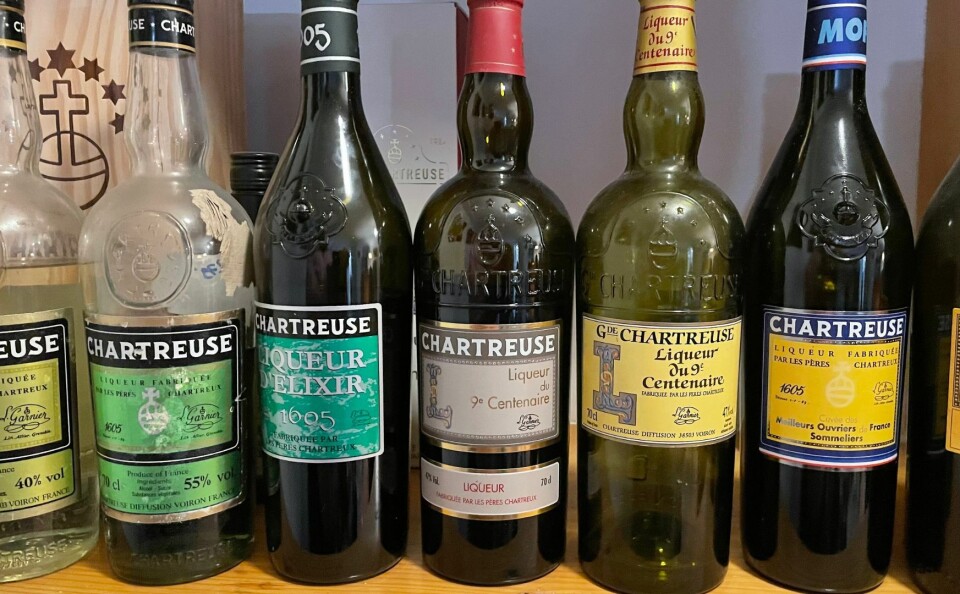-
Drivers from France may soon be subject to new alcohol limit when visiting Spain
The new measure is expected to be rolled out in 2025
-
Know your cheeses and their seasons: which to eat in France in February
Cow’s milk cheeses dominate as winter comes to an end
-
Films and series to watch in February to improve your French
Every month we outline good film and TV series to improve your language
Chartreuse: monks’ silence on green French liqueur is marketing gold
The monastery in the French Alps refuses to increase production, pushing prices ever higher

Chartreuse liqueur faces a stock shortage in France and the United States, but consumers will have to be patient as producers have no interest in yielding to market demands.
The liqueur has been crafted by the secluded monks for 500 years in a nearly 1,000 year-old monastery in the Chartreuse mountains in the French Alps.
Made from 130 different varieties of plants, flowers and bays, its recipe has never been disclosed.
An all-time-high 1.2 million litres were produced in 2022, 300,000 of which were shipped to the United States, the biggest export market.
Read more: Meet the sibling distillers making liqueurs from French Alpine plants
‘Refuse the race for infinite growth’
Despite increased demand for the green liqueur, the monks refused to vie for economic growth and prosperity.
“La Chartreuse refuses the race for infinite growth”, said Chartreuse Distribution, the distributor of the liqueur, in a statement last April following the surge in activity which is at odds with monasterial life.
The company pulled the plug on a recent frenzy around its liqueur.
It has accepted some interviews in French newspapers over recent weeks and has been featured extensively over the last few years, most notably in The New York Times in 2020.
However, this brought too much scrutiny.
“Chartreuse Distribution is a singular company working for a religious order. Its main mission is to protect monks who pray for humanity in the silence of their monasteries,” said the company in a statement to The Connexion.
The company declined an interview with The Connexion, in an effort to protect the monks and return slowly to silence, it added.
Read more: French crème de cassis producers stop Chinese firm using Dijon name
It took 30 years to make a drinkable liqueur
However odd such a communication campaign may seem in our interconnected and global economy, it has actually been the greatest marketing asset behind the liqueur’s successes since 1605.
That was when Parisian monks from the Vauvert Chartreuse were given the recipe of the liqueur – then only known by apothecaries – by the duke of Estrées.
It was so complex that the first bottles/product were not made until 1737 by Jérôme Maubec, a monk of the Grande-Chartreuse monastery.
It took 30 years of experimentation before he was able to get a drinkable liqueur out of the many plants required for its composition. The original recipe reaches 70 percent proof.
Years of state persecution during and after the French Revolution (which eventually forced monks into exile in 1903 - most took refuge in Spain) and the destruction of the distillery following subsidence in 1935, contributed to restricting the liqueur to a small audience of consumers.
Bottles before 1878 can be sold for up to €20,000
The income of the Monastère de la Grande Chartreuse (Isère) is estimated to be nearly €75 million, according to Les Echos.
Aymeric de Clouet, a wine and Chartreuse expert and merchant for 20 years, said his Chartreuse business has never been so successful as now.
His clientele is split between connoisseurs and professional resellers, with both rarity and bottling setting the price.
While bottles produced in the 1970s cost between €150 to €500, those produced before 1878 can be sold for up to €20,000, said Mr de Clouet.
‘The liqueur is more and more elitist’
Chartreuse now produces Chartreuse Verte (55°) and Chartreuse Jaune (43°) – called V.E.P – and a myriad of limited editions for particular events or Chartreuse-flavoured herbal tea.
It mechanically triggers price speculation, which has never been this expensive, said Mr de Clouet.
“It is less and less popular but more and more in demand. Even collectors think it is getting too expensive,” he added.
“The liqueur is more and more elitist,” concluded Mr de Clouet.
Chartreuse Distribution told The Connexion it was planning an event in Paris for November, expecting a new wave of media frenzy from the press.
“We prefer not to reveal any more,” it said.
Related articles
€48-a-bottle French truffle gin is hit as a liqueur
France is once again the world’s largest producer of wine
Five things they don’t tell you about getting tipsy in France
























